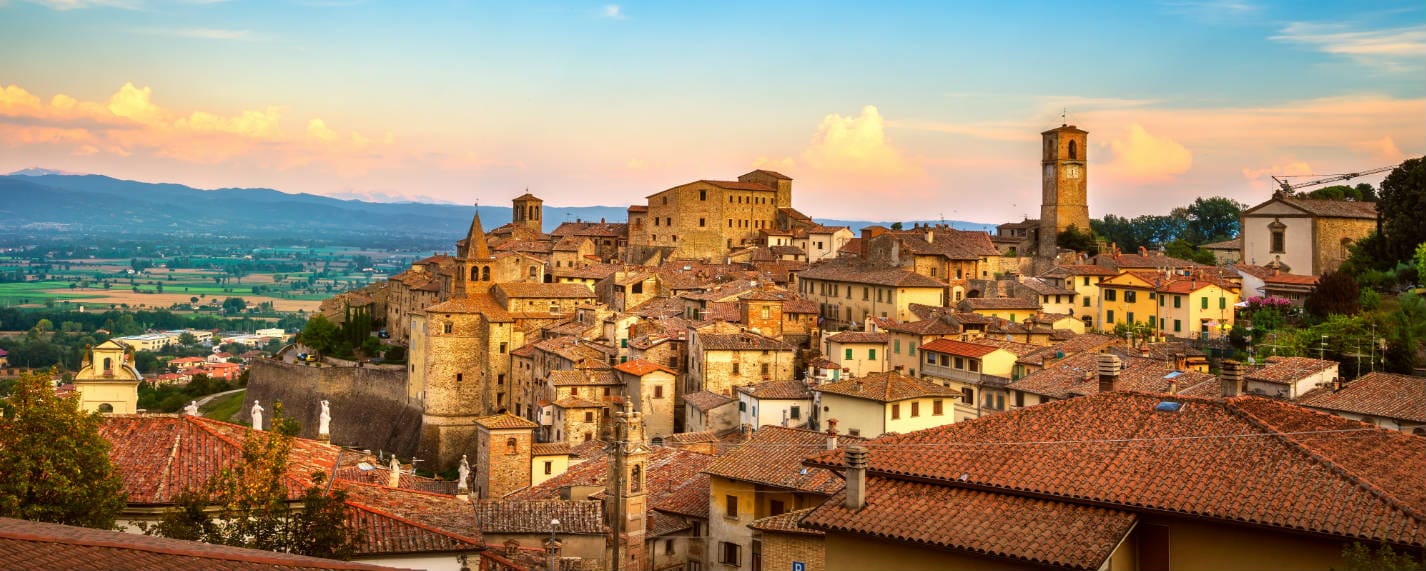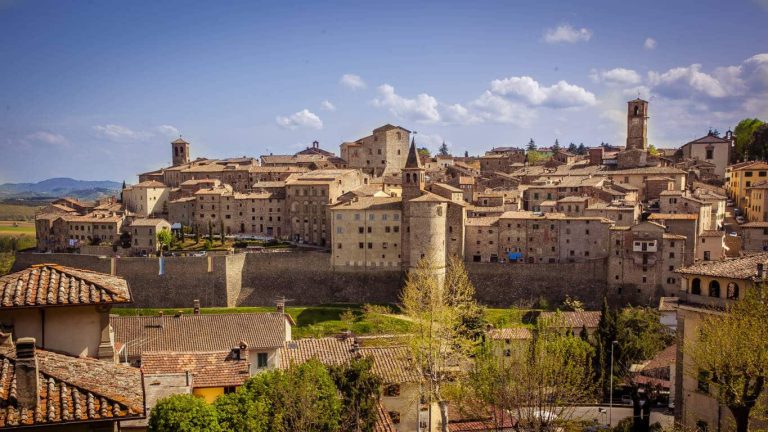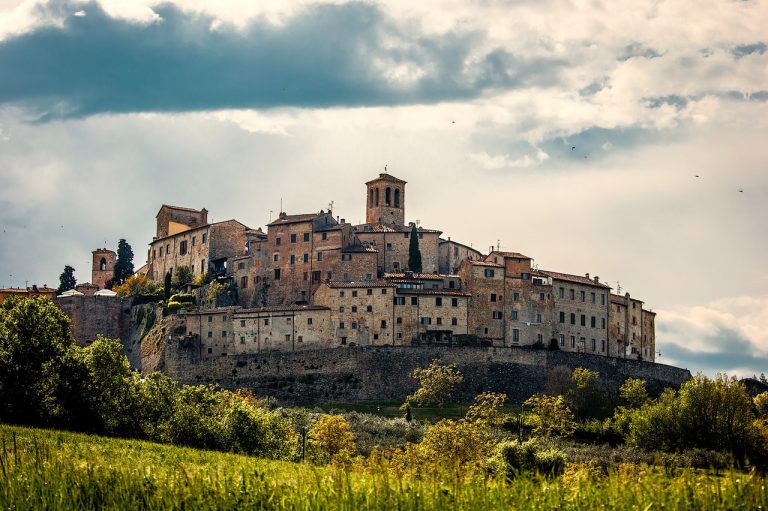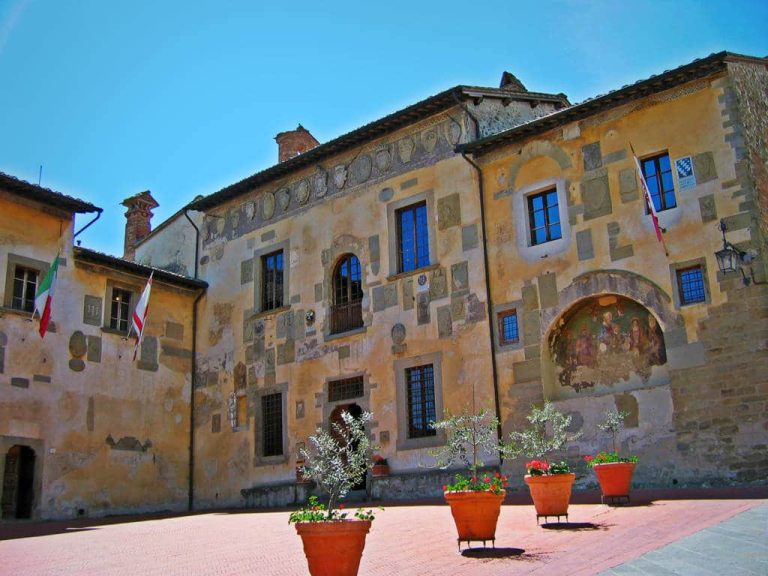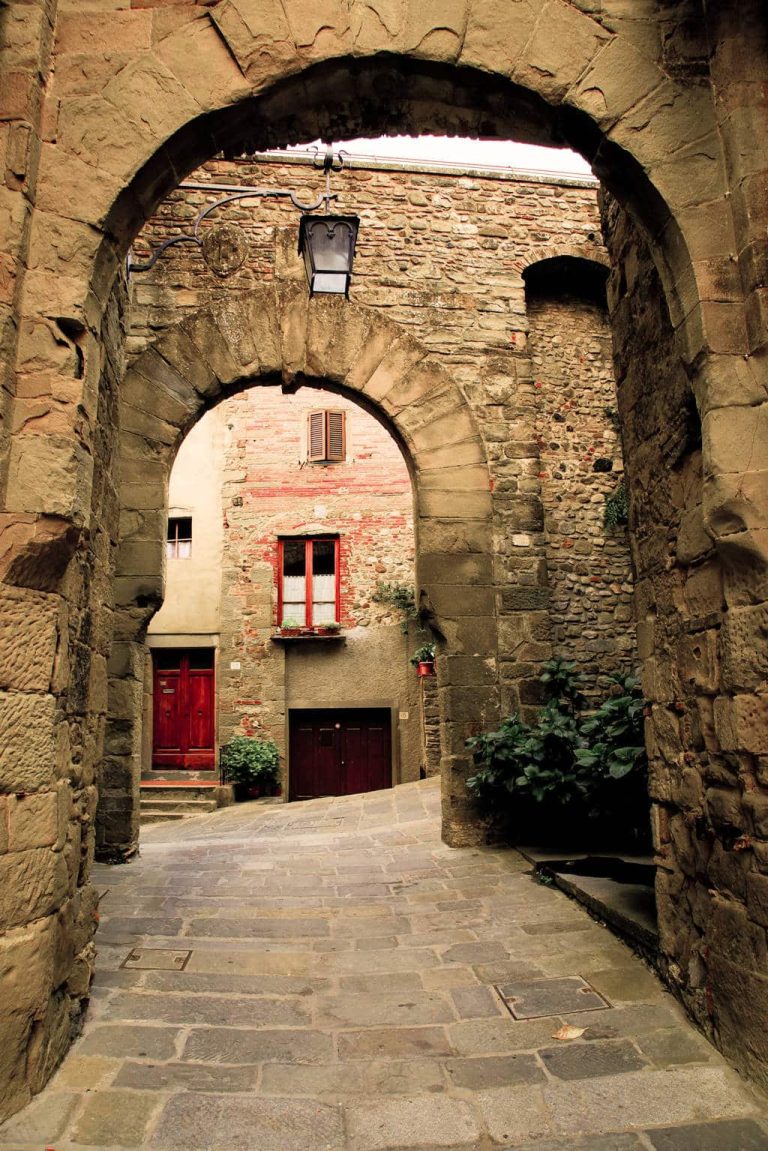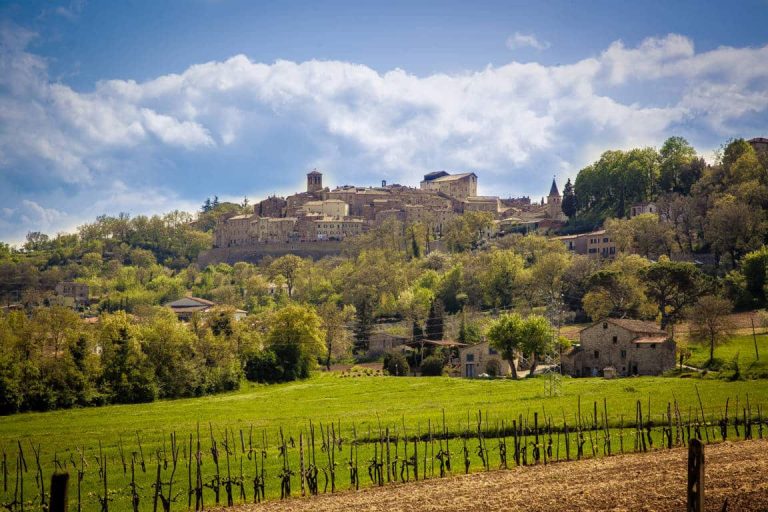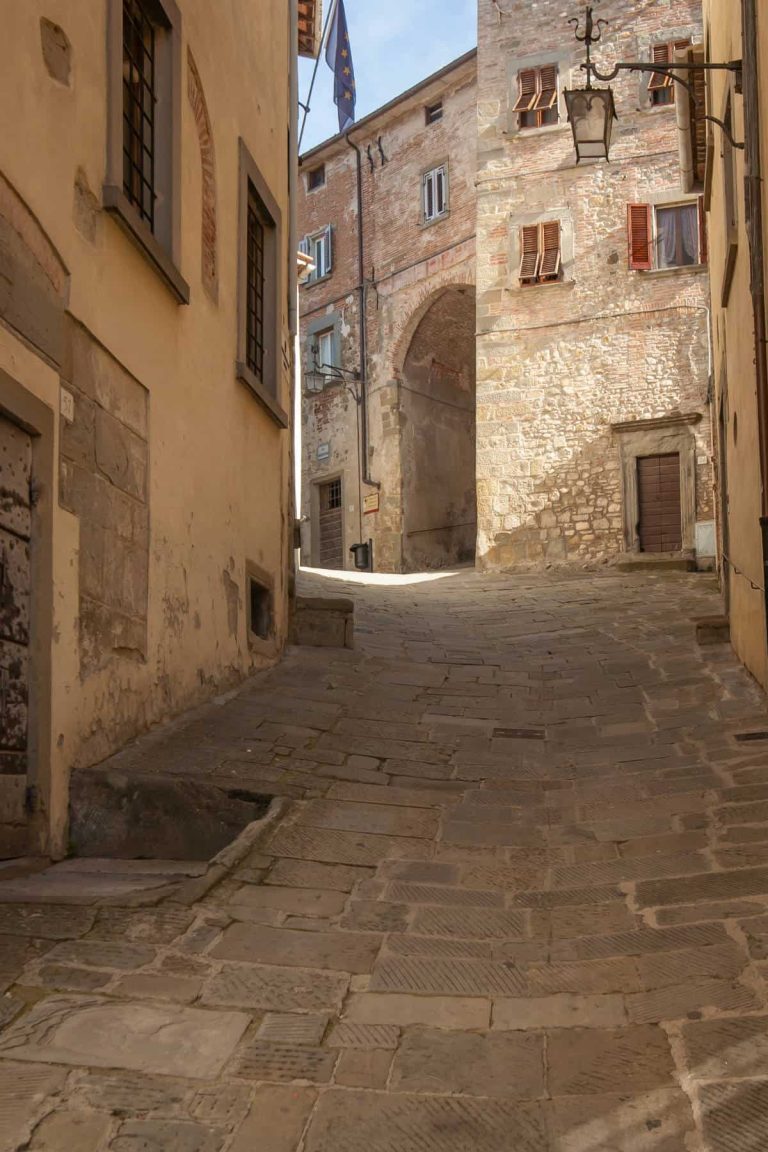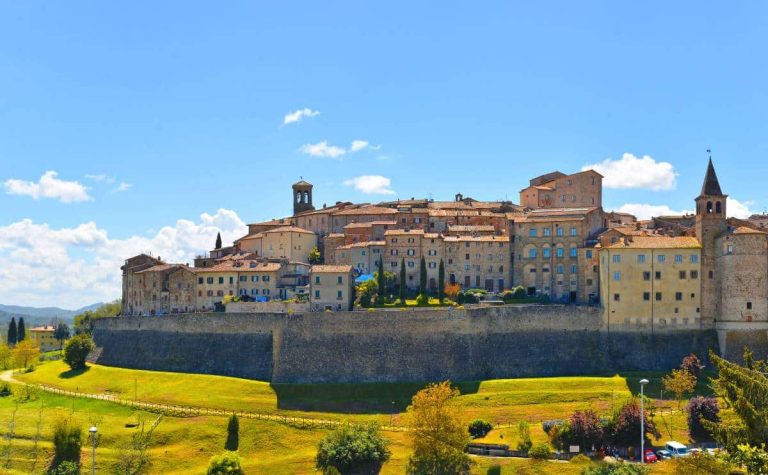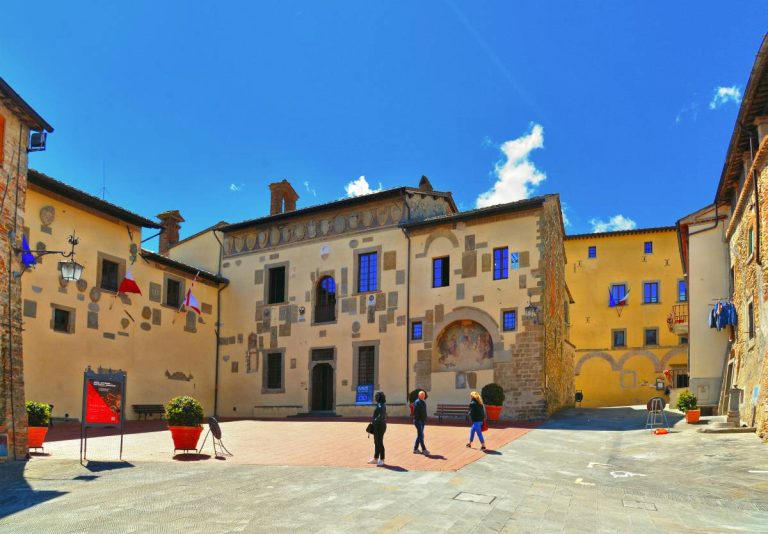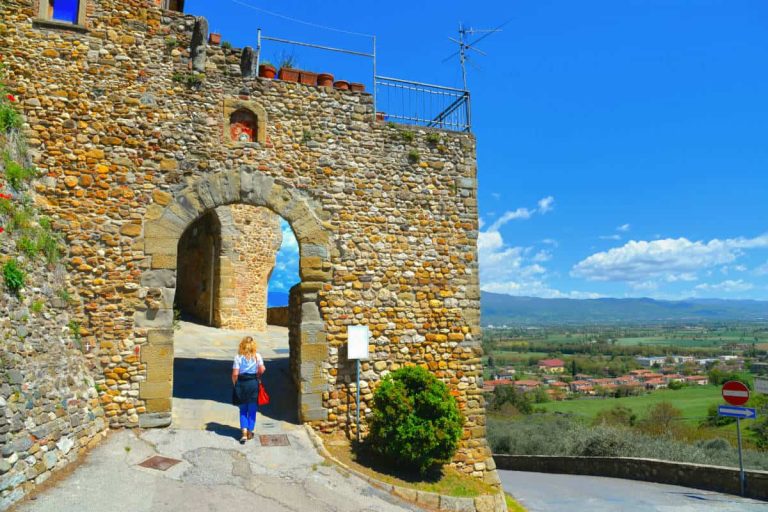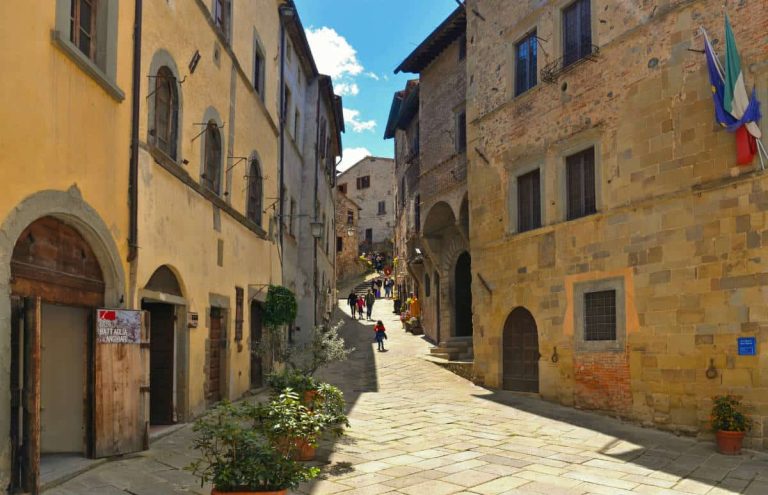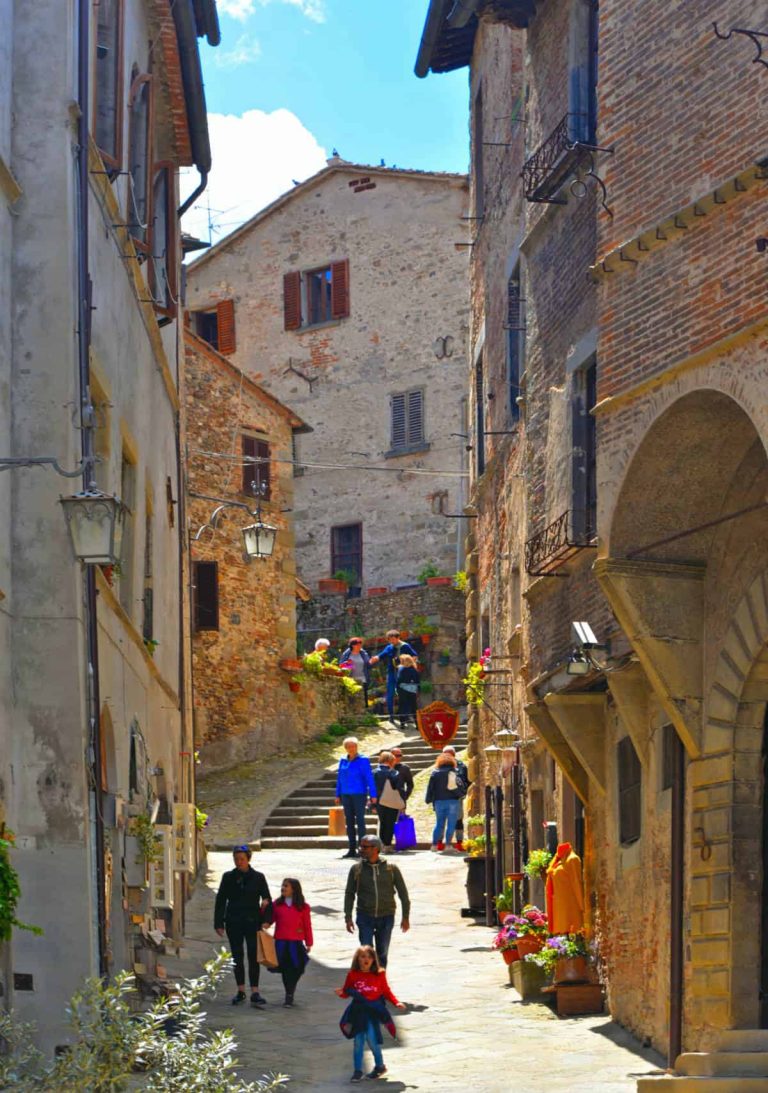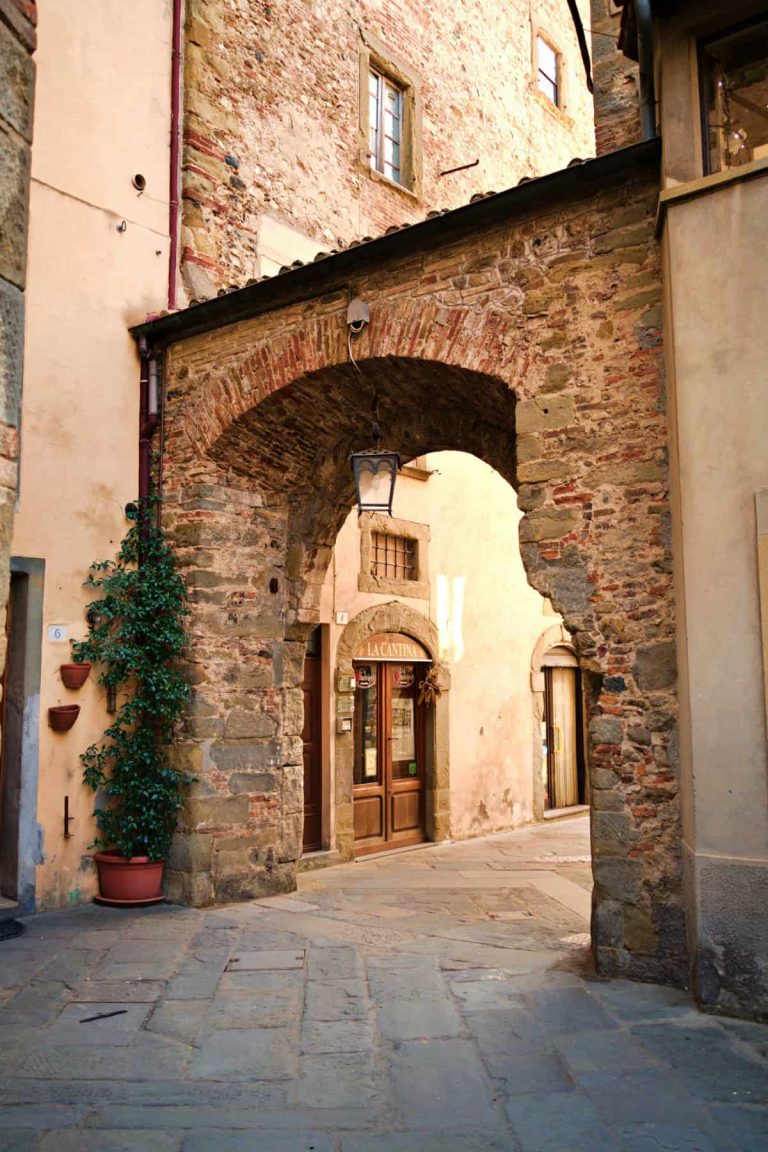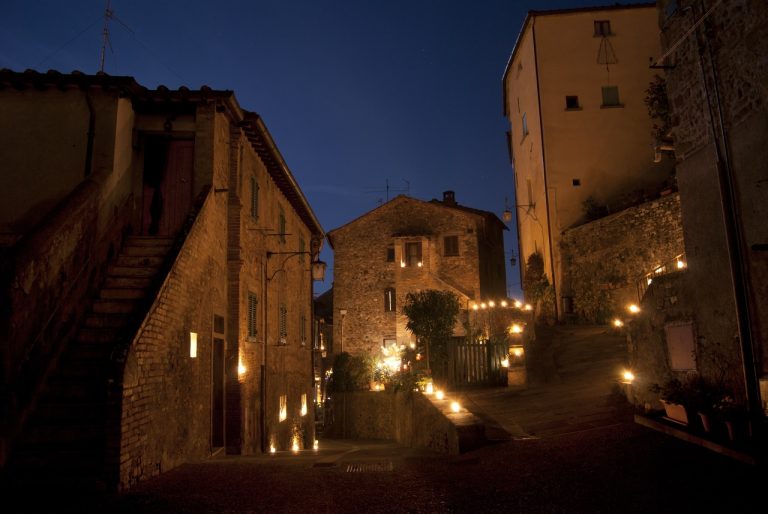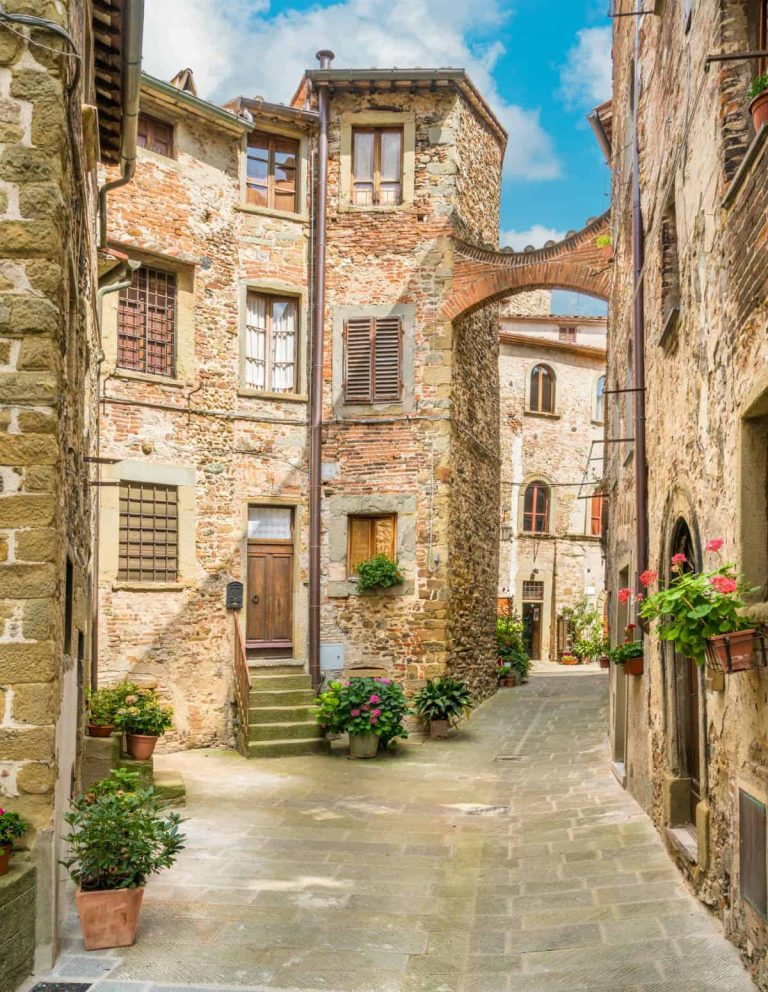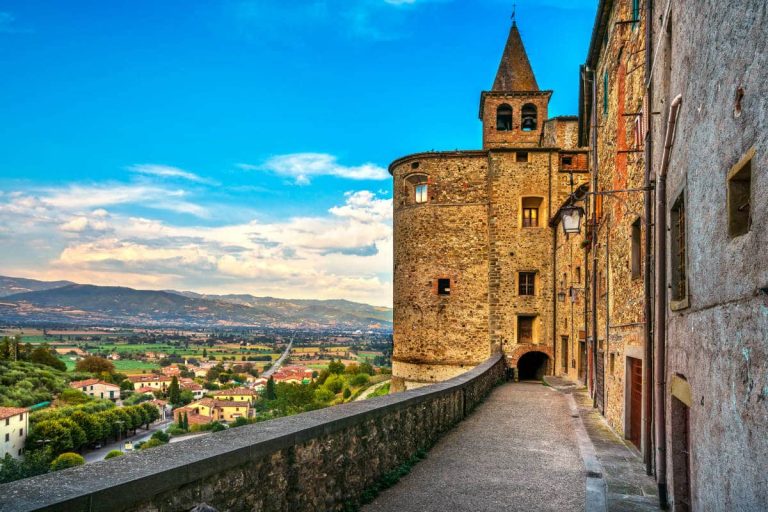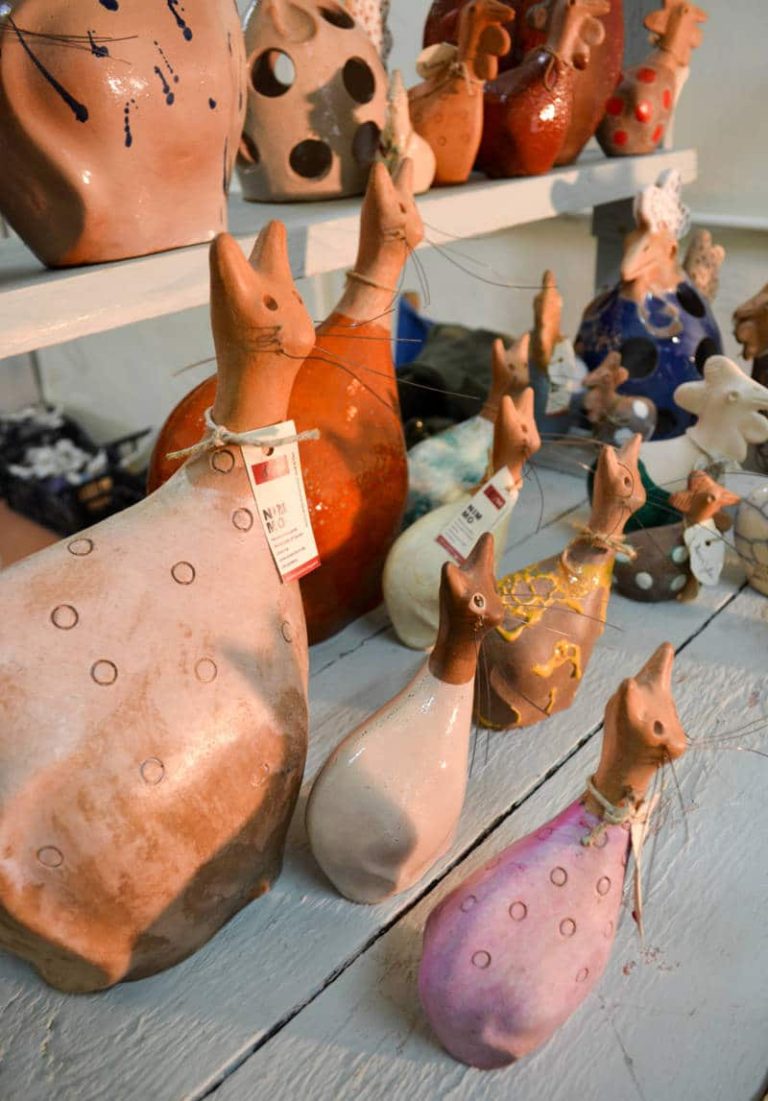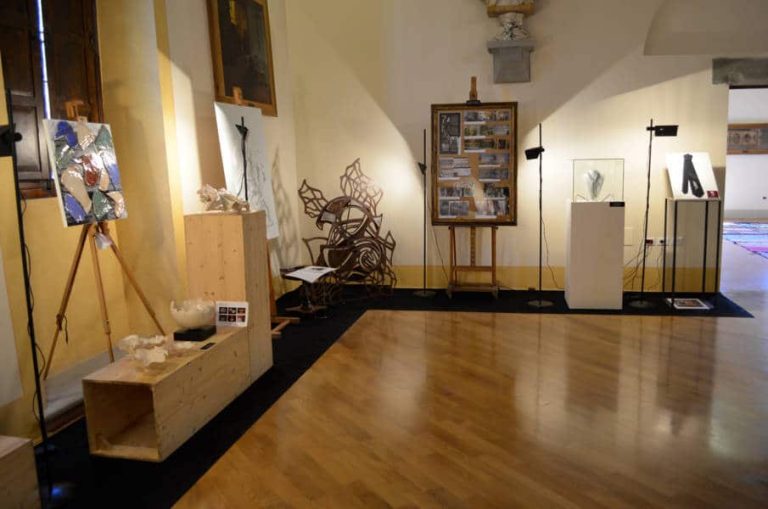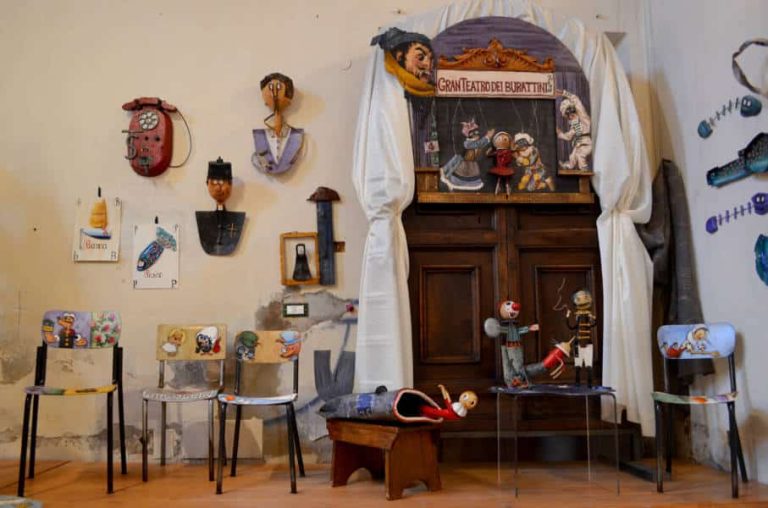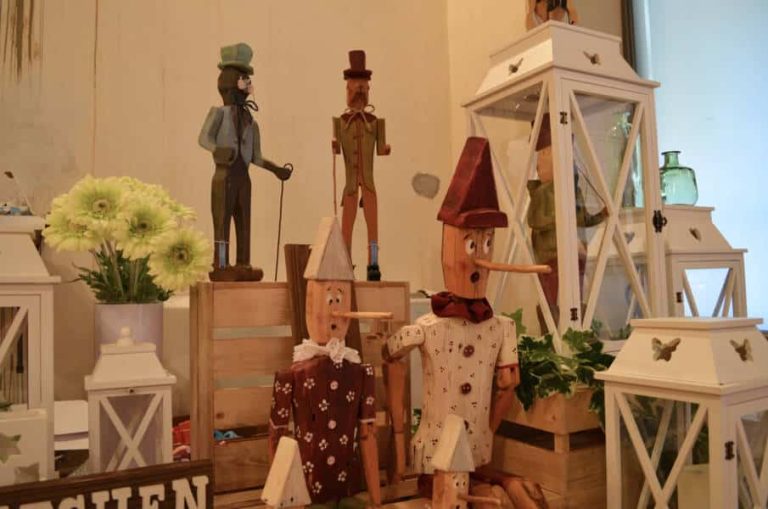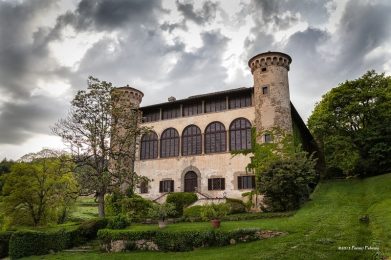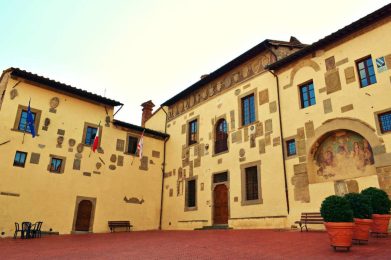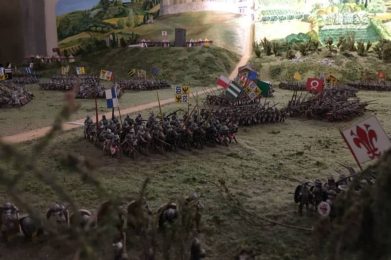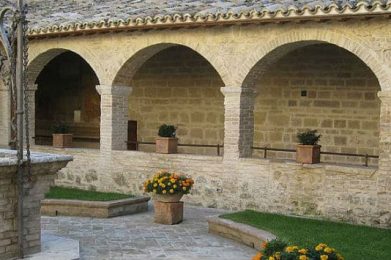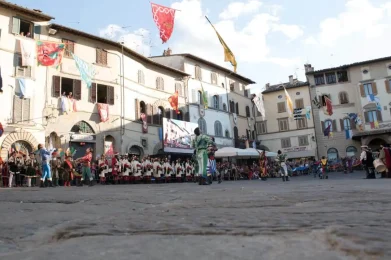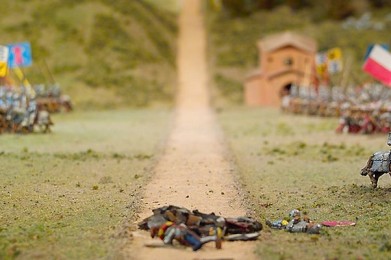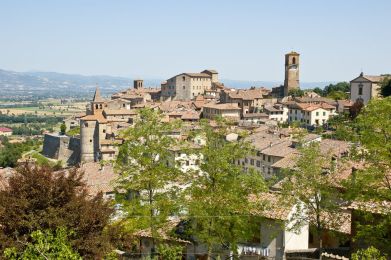Anghiari (from the latin angularium, in altotiberino and biturgense Angdièri) was the scene of the battle fought in the year 1440 between the Florentines and the Milanese and then painted by Leonardo da Vinci. Is part of the Tuscan Valtiberina, which takes its name from the river Tiber River running through its entire length. On the origin of the name thesis are different: some argue that derives from angular castrum, referring to the angular shape of its castle, others affirm that derives its name from in glarea. Actually the village is built on a pile of gravel accumulated by the Tiber River over the millennia. Raise in the VII century a longobard castle, on preexistence of roman age (presumably a farm as can be seen from the cell vinaria in Palazzo Pretorio), disputed with the Byzantines.
The castle of Anghiari, remembered for the first time in a document of 1048, was first subjected to the longobard faction loyalty of the Counts of Galbino and Montedoglio and in 1104 the place was donated by Bernardino di Sidonia, lord of Anghiari, to the Camaldolese monks with the obligation to found an abbey: the monastery of St Bartholomew the Apostle. Around it, hereinafter developed the inhabited center. From 1104 to 1143 Camaldoli became absolute master of the whole area of Anghiari.
On 29 June 1440 the plain in front of Anghiari was the theater of a famous battle, passed into history as the Battle of Anghiari between the Florentine army, ally of the Holy See and controlled by John Paul Orsini, and that of the duke of Milan, conducted by Niccolò Piccinino. The battle lasted a day and was conquered by the Florentines, who thus consolidated their domains in Tuscany. In a sign of rejoicing for the victory, it was established to perpetuate the memory with a Palio, course for men walking from the place where was the battle. In 1503 the Signoria of Florence, headed by the gonfalonier Pier Soderini, turned to Leonardo da Vinci to portray in the Council Hall of Palazzo Vecchio a wall painting depicting the battle. Unfortunately the drying process innovative tested by Leonardo destroyed most of the opera.
The latter remain some drawings of the Maestro and some copies (performed by painters of the time) of the central part, the fight for the banner, one of which is among the most known is the Rubens' one, today at the Louvre Museum. The economy of Anghiari today is based, in addition to agriculture and tourism, on the handicraft tradition. In particular the popular activities are the restoration of antique furniture, weaving, embroidery and the pillow lace, the production of artifacts in wicker, the mulching performed with marsh grasses and goldsmith's machining.
The Bringoli with sauce fake are the typical dish of Anghiari, are spaghetti with water and flour cut by hand.
The Liceo Artistico of Anghiari, unique reality in the panorama of Italian school, is the backbone of a craft tradition of wood never abandoned from the epoch of the gunsmiths anghiaresi. Anghiari is the seat of the Free University of autobiography, the largest Italian center of study and teaching on this topic, founded in 2000 by Saverio Tutino and Duccio Demetrio, who presides over it.

